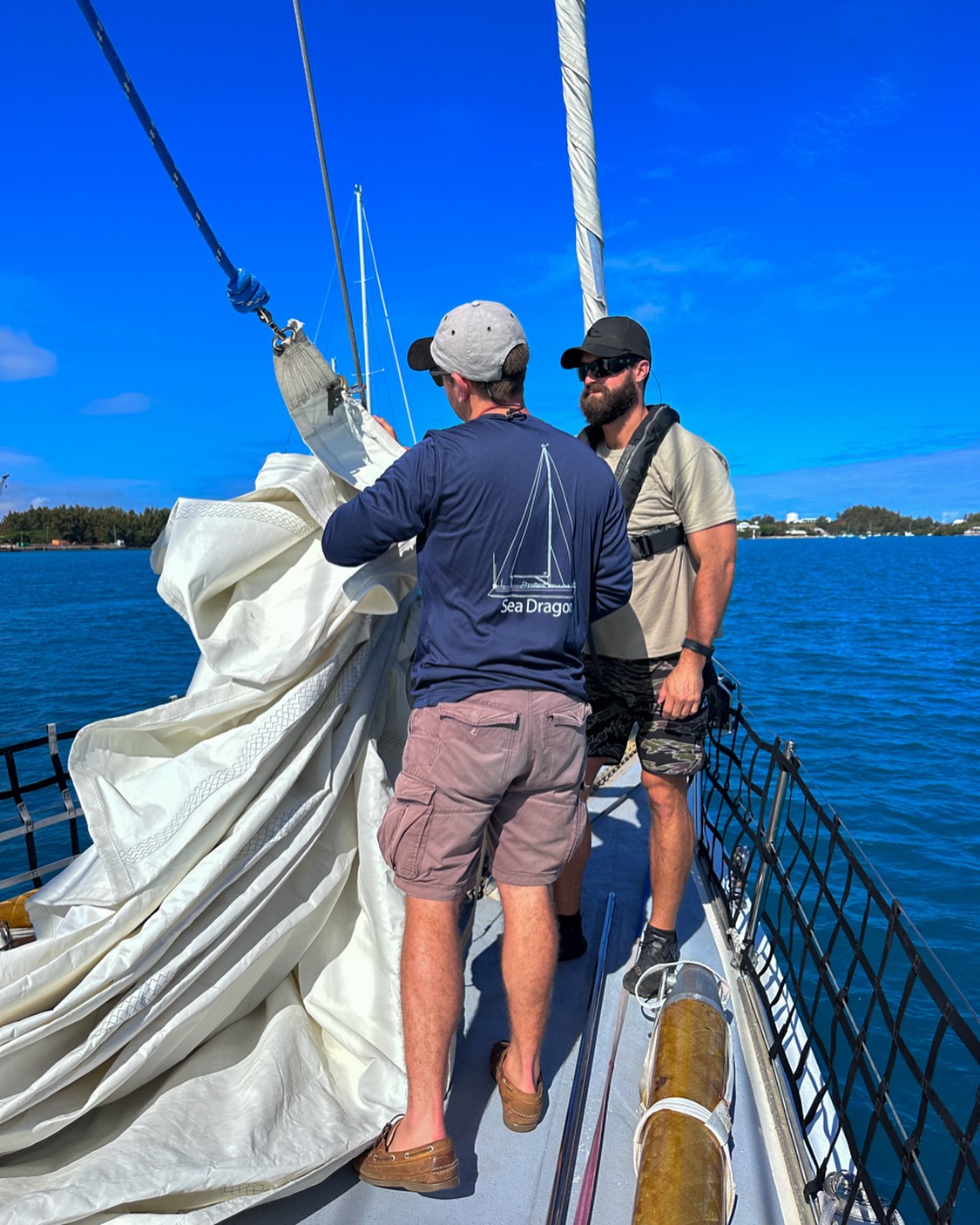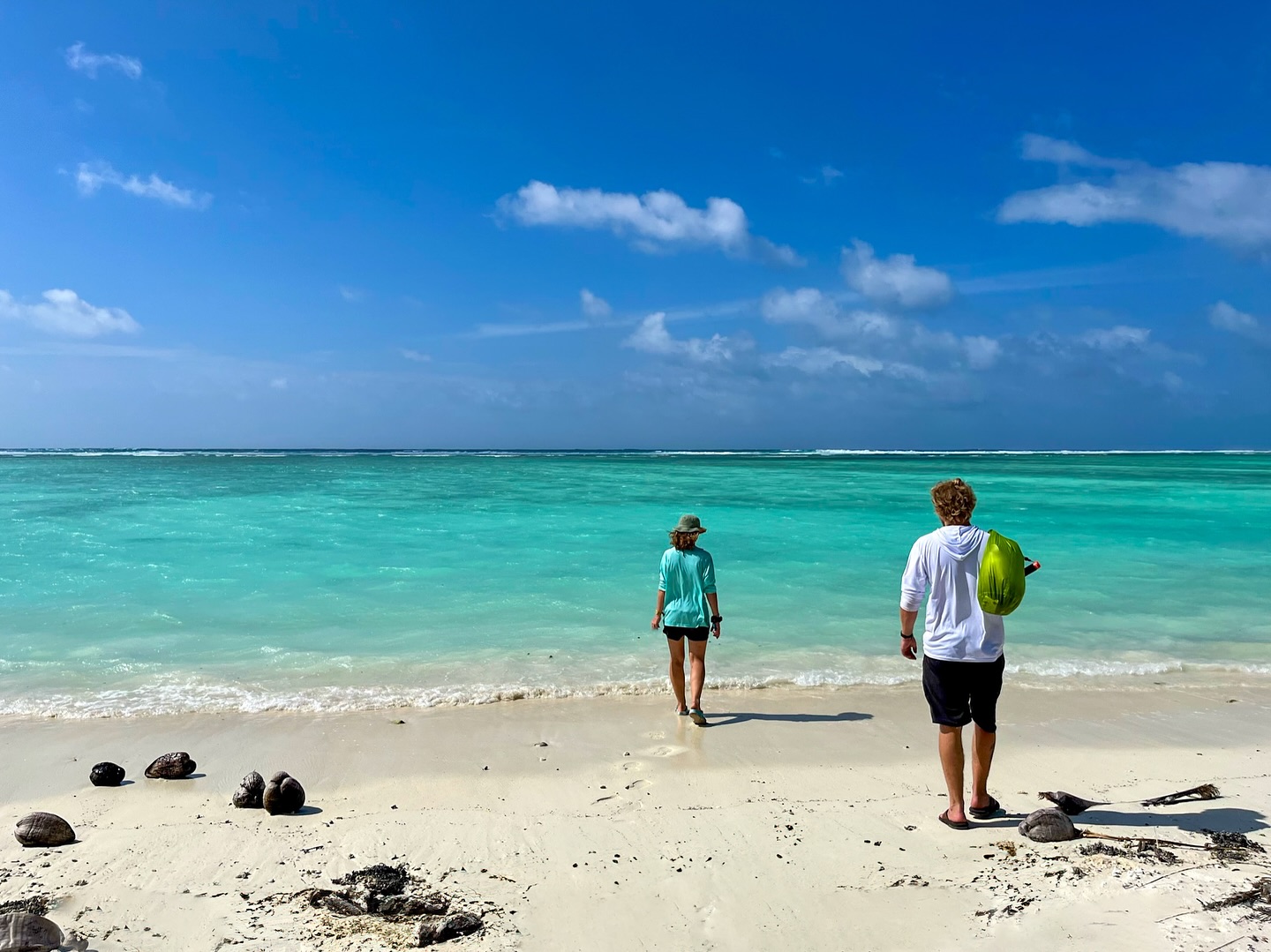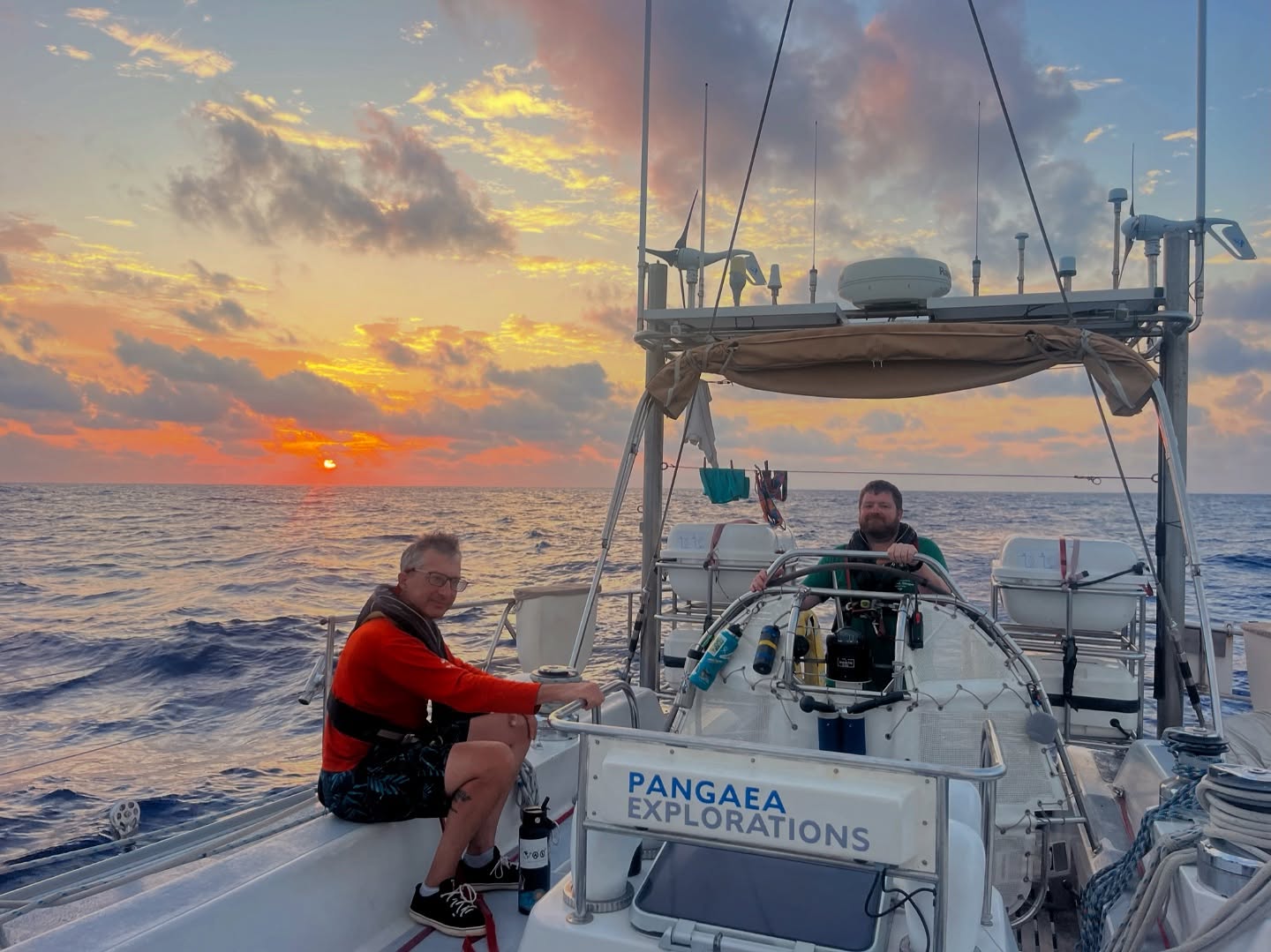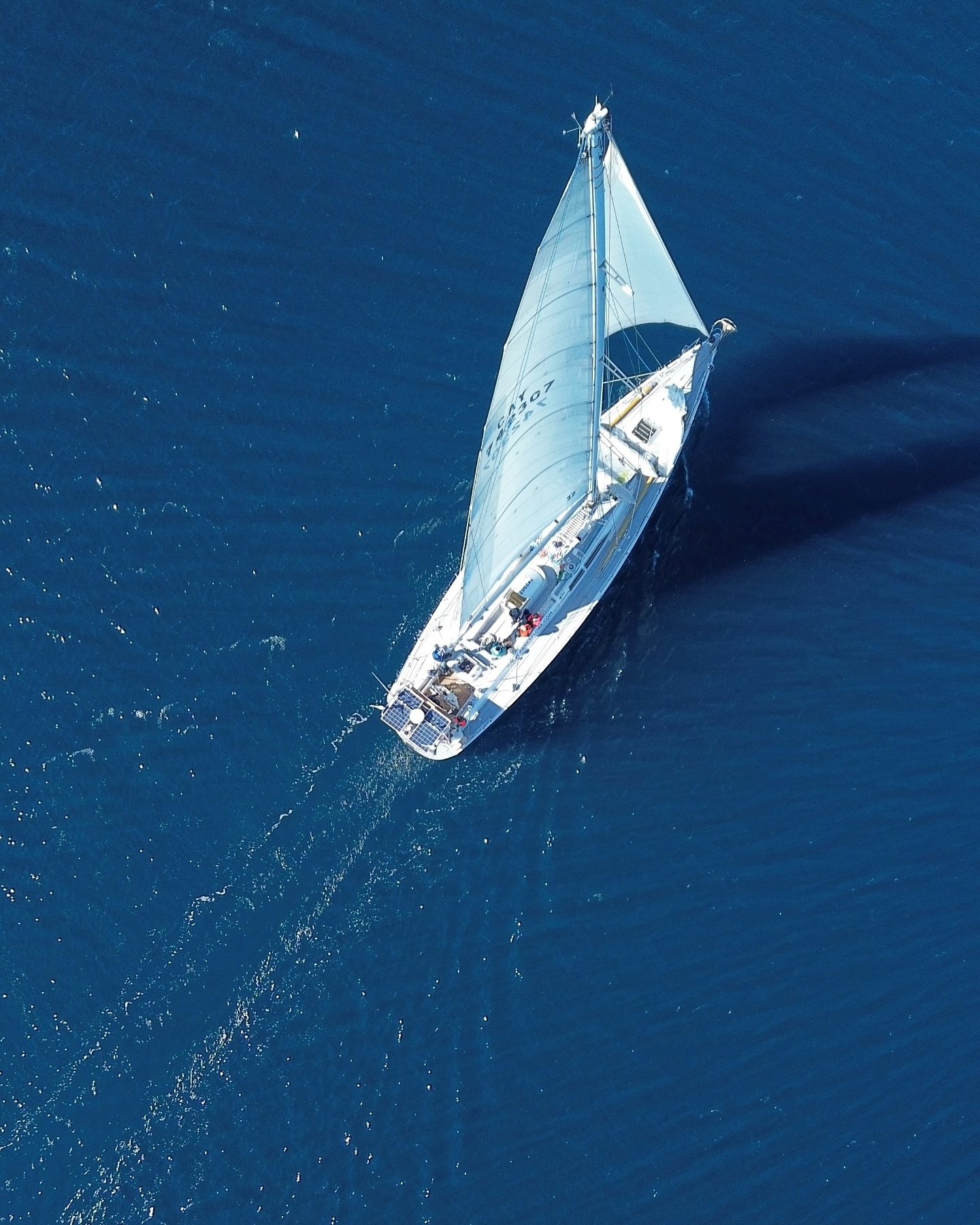1200 GMT Nov. 30 Sea Dragon is at 32°11.77S / 6°14.09W.
“There’s another one!” Bonnie yells, pointing to a bobbing pink ball a quarter mile away. I run to the back of the Sea Dragon and throw the throttle in neutral, letting the momentum of this 50 ton ship glide to the target.
“Port side! Grab your nets!” Rich Owen yells from the bow.
“How far? How many degrees to port?” I yell from the stern. It’s a shouting match to guide Bonnie and Anna to the target. They’ve got nets on the ready. It takes two nets to haul the large colorful fishing buoy on board.
“15 degrees to starboard for the next one. It’s right here!” Rich relays back. Anna scoops another miscellaneous fragment of broken plastic roughly the size of a dinner plate. A small fish, maybe 6-inches long scurries about in all directions, having lost its shelter.
The rest of the 5 Gyres team in on deck inspecting the plethora of marine life fouling the junk. There’s a thick mane of gooseneck barnacles hanging from the buoy, with brown and blue pelagic crabs scurrying about. The crabs wear bright white patches, like the way polar caps appear on a globe.
The other plastic fragment has a colony of polycheate worms gliding over its smooth surface. All of this plastic is creating a kind of artificial floating reef, with trillions of dust-size particles of synthetic plastic flowing in and around marine life. Plastic has been found in the stomachs of ½ the world’s seabirds, marine mammals, all sea turtle species, even in the blood of mussels. And the list of plastic in fish grows longer. The sea is plasticized, as are we.
Then we stop.
Jody jumps in with his camera, followed by James. “How’s the water?” I ask, knowing it’s cold, after taking a dip myself a few days ago. “About 60° I figure,” he responds. Stiv then follows. All three of them are floating among the junk. I throw in the 30 ft. net we found yesterday, and the hardhat from this morning, and the two plastic bottles and buoys. We keep all the plastic in one place for a few photos. Another red piece, about the size of a license plate, hovers behind Jody. There’s a fish under it. It swims under Jody, then under James, finally under the boat, the largest shelter on an otherwise empty sea.
We haul all people and plastic back on board. In a few minutes we’re cruising at 6 knots. Bonnie is counting large pieces she seas. She’s up to 60 now. Rich is standing guard with a net in one hand, and his other behind his back. We’re as close to the center of the South Atlantic Subtropical Gyre as we will ever get on this voyage.































